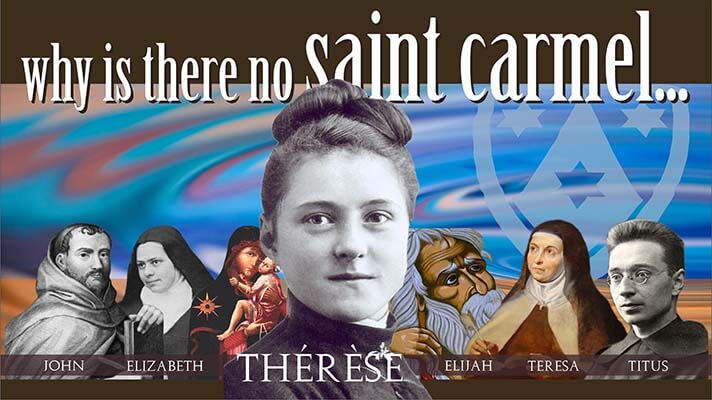
Who is Thérèse of Lisieux?
(SOURCE: ocarm.org)
1 October Feast
Saint Thérèse was born at Alençon in France on 2nd January 1873. Her parents were Louis Martin and Zélie Guérin. After the death of her mother on 28th August 1877, Thérèse and her family moved to Lisieux.
Towards the end of 1879, she went to confession for the first time. Taught by the Benedictine nuns of Lisieux, she received First Holy Communion on 8th May 1884. Some weeks later, on 14th June of the same year, she received the Sacrament of Confirmation. She wished to embrace the contemplative life, as her sisters Pauline and Marie had done in the Carmel of Lisieux, but was prevented from doing so by her young age. On a visit to Italy, during an audience granted by Pope Leo XIII to the pilgrims from Lisieux on 20th November 1887, she asked the Holy Father with childlike audacity to be able to enter the Carmel at the age of fifteen. On 9th April 1888 she entered the Carmel of Lisieux. She received the habit on 10th January of the following year, and made her religious profession on 8th September 1890. She fulfilled in a very special way all the little aspects of daily life, with humility, a gospel simplicity and great trust in God, and she tried by her example and her words to impart these virtues to her sisters, especially the novices. Discovering that her place was to be at the heart of the Church, she offered her life for the salvation of souls and for the well-being of the Church.
On 3rd April 1896, in the night between Holy Thursday and Good Friday, she suffered a haemoptysis, the first sign of the illness which would lead to her death; she welcomed this event as a mysterious visitation of the Divine Spouse. She was transferred to the infirmary on 8th July. Meanwhile her sufferings and trials intensified. She died, transported by love, on 30th September 1897. Her final words, “My God…., I love you!”, seal a life which was extinguished on earth at the age of twenty-four; thus began, as was her desire, a new phase of apostolic presence on behalf of souls in the Communion of Saints, in order to shower a rain of roses upon the world.
She was canonised by Pope Pius XI in 1925 and proclaimed patron of the missions by the same Pope in 1927. On 19th October 1997, Pope John Paul II declared her Doctor of the Church. Most remarkable is her biographical account, The story of a soul. In her autobiographical manuscripts she left us not only her recollections of childhood and adolescence but also a portrait of her soul, the description of her most intimate experience.
Additionally, below the video are a few resources we recommend for those who would like to learn more about this amazing Carmelite Saint.
To find more resources and to learn more about Albert, The Carmelite Rule, or any of the Carmelite Saints and Carmelite Spirituality, we suggest:
Books on Albert of Jerusalem from Carmelite Media Publications
For educational opportunities including webinars and Days of Recollection – https://www.carmeliteinstitute.net
For other print resources written by Carmelites – https://www.icspublications.org
For Retreat Opportunities – https://carmelitespiritualcenter.org
We hope you are enjoying “Why Is There No Saint Carmel?” video series – view all current and future additions to the series by visiting our YouTube channel. We invite you to return for future videos, and we pray these reflections inspire you to go deeper and learn more from our amazing family of Carmelite saints.
The Carmelites of the Province of the Most Pure Heart of Mary, in allegiance to Jesus Christ, live in a prophetic and contemplative stance of prayer, common life, and service. Inspired by Elijah and Mary and informed by the Carmelite Rule, we give witness to an eight-hundred-year-old tradition of spiritual transformation in the United States, Canada, Peru, Mexico, and El Salvador, and Honduras.
Please consider supporting their mission
https://carmelitemedia.tiny.us/supportpcm
to make a financial donation.
